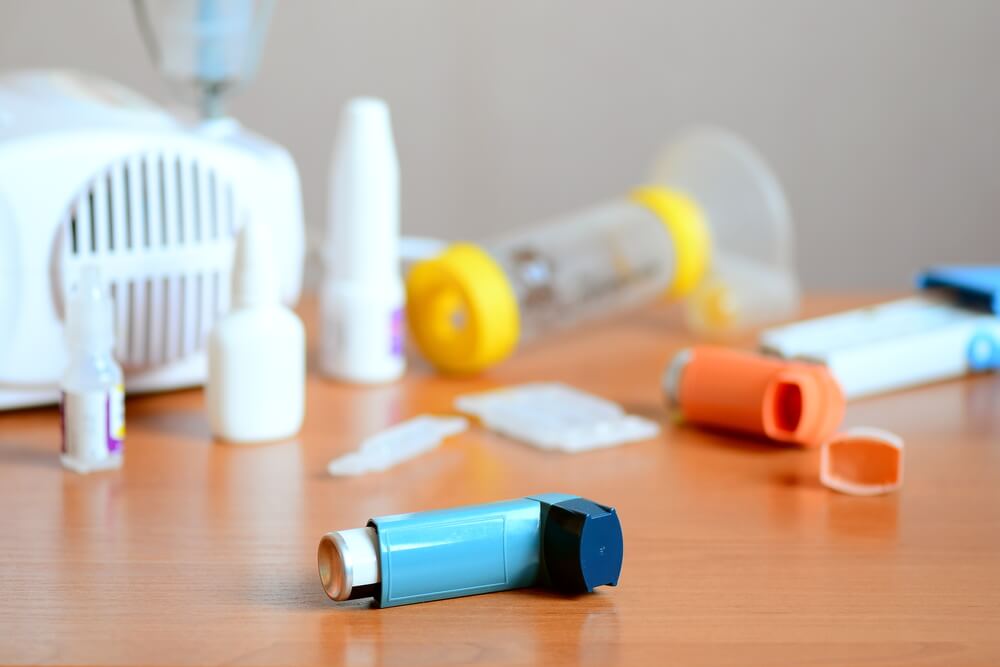Springtime can be a challenge for children with asthma or allergies. Managing symptoms requires taking specific precautions to protect your child from flare-ups that can range from annoying to life-threatening.
Asthma is a chronic lung disease that affects 7% of children under age 18, ranking as the most common chronic childhood condition in the United States. While asthma can be associated with an allergic or nonallergic reaction, about 90% of children with asthma experience attacks triggered by allergens, making springtime a particularly dangerous time for children with asthma.
Asthma involves inflammation and constriction in your child’s airways, causing symptoms that interfere with normal breathing. While environmental triggers, called allergens, can provoke an asthma attack, asthma can also flare without allergies.
Allergies occur when your child’s immune system overreacts to an allergen, releasing histamines that can affect your child’s eyes, nose, ears, or mouth — or in some cases other body systems. Depending on the severity of the allergic reaction, it can cause symptoms similar to asthma when it affects your child’s lungs.
Whether your child experiences symptoms related to asthma, allergies — or a combination of the two conditions, called allergic asthma — knowing how to manage your child’s symptoms can help them continue with normal routines and stay more comfortable and safe.
Our board-certified pediatrician, Andrew Satran, MD, of Advanced Pediatrics of Rockland, can explain hat you need to know about managing your child’s springtime asthma and allergy symptoms. After he examines your child and makes a diagnosis of allergies or asthma, Dr. Satran recommends an appropriate treatment plan.
You can make a difference in your child’s daily life and their risk of annoying and troublesome asthma attacks and allergy flare-ups by following these recommendations.
1. Learn to recognize symptoms
Knowing how to recognize symptoms of asthma and allergies gives you the chance to intervene with appropriate treatment as early as possible. Dr. Satran advises a plan of action when symptoms occur, depending on your child’s condition.
If your child is having an asthma attack, they may display the following symptoms::
- Wheezing and coughing
- Chest tightness
- Shortness of breath
- Sleeplessness and/or waking up during the night
Symptoms of allergies alone typically resemble a cold and may include the following:
- Sneezing
- Congestion
- Runny nose
- Itchy eyes, nose, mouth, or ears
- A productive cough
- Postnasal drip
2. Limit exposure to pollen
Pollen ranks as the most common spring allergy trigger that’s inhaled from outdoor air. If your child is allergic, their immune system mistakenly interprets pollen as a danger and initiates an allergic reaction.
Pollen counts can be high on breezy days when the wind picks up these small grains and carries them through the air. Rainy days, which wash away the pollen, tend to be safer for children who are allergic.
You can reduce your child’s risk of symptoms by keeping your children inside on windy days or those categorized with high pollen counts in your area.
3. Watch out for mold
Mold spores are another common springtime allergen that becomes abundant when damp and rainy conditions are followed by warmer weather. Molds spores travel with the wind. You’re most likely to find mold from spring through fall in the outside air.
Mold can also occur inside your home as a result of water damage or damp conditions. If your child is experiencing allergy symptoms and other allergens, such as pet dander and dust mites, have been ruled out as sources, you can test your home for mold to determine whether unhealthy mold levels exist and may be aggravating an allergy.
4. Take precautions
Take the following precautions to reduce the risk of asthma and allergy attacks in your child during springtime:
- Flush out your child’s nasal cavities with a saline solution
- Keep windows closed and run the air conditioning
- Avoid bringing pollen into your house by changing clothes after being outside
- Have your child bathe or shower before bedtime to wash pollen from their hair
- Don’t hang sheets or clothing outside to dry; use a clothes dryer
- Make outside plans carefully, with attention to local pollen counts
Dr. Satran may advise the use of allergy medications, such as antihistamines, to reduce annoying symptoms like sneezing and congestion. If he thinks it will be beneficial, Dr. Satran may suggest immunotherapy to help treat allergies.
If your child has asthma, Dr. Satran prescribes an appropriate medication regimen to prevent attacks and recover from symptoms. These treatments may include oral medications or drugs delivered via an inhaler or nebulizer treatment.
Find out more about ways to manage your child’s springtime asthma and allergy symptoms. Request an appointment online or call our office in Pomona, New York, to schedule a consultation.





